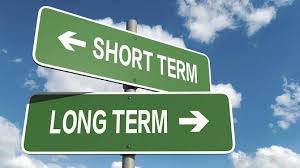PERSONAL FINANCE OR INVESTING
The term personal finance means managing your money. It starts with saving your money and investing it in the right way. This includes making a well-planned budget, sticking to it, planning insurance, banking and managing all finances. Personal finance goes a long way as It starts as soon as you get your first paycheck and until you retire. It would be better if you start planning and investing early in your life to spare yourself some freedom during the old years. This article will help you through the aspects and requirements of investing and how to bring yourself into safe and fruitful investments.
There are several areas of interest when talking about personal finance. Focusing on the most important broken-down parts of personal finance each one is discussed below to have a better insight. The 5 key areas include Income, Protection, Spending, Saving and Investing. Combined all these aspects form a strong foundation of your personal finance.
- Income: income is the cash inflow that a person receives and utilizes to support themselves and their family. This is the beginning of everything and this is when you start planning
 your saving strategies.
your saving strategies. - Spending: spending is what you do with your income whether necessities or luxuries that you buy from it. Spending uses most of the part of your income.
- Saving: saving can be done in any form, cash or bonds or shares in the stock market. It includes your amount of income that you want to keep to be used in the long term.
- Investing: investing involves buying assets that are predicted to generate a rate of return over time.
- Protection: this might be one of the last steps that come into people’s minds while financing but it is an important one. Personal protection includes any safety measures that can be taken to deal with the hard times and unforeseen circumstances. These include Life insurance, health insurance and planning.
A good financial plan keeps all these areas in consideration and plans according to it. Several strategies can be used to make a working financial plan.
- Plan a budget: A budget is the only known and good technique that can help you keep your finance in limits. the well-known 50/30/20 budget method is the most efficient one if you follow it religiously.
- 20% of your budget goes into the future as savings for retirement or future.
- 30% is used for the lifestyle of luxuries, such as shopping or dining out.
- 50% is used to fulfil your daily needs and expenses. Such as fuel, food, groceries and utility bills.
To keep your budget strictly managed you can download an app in your phone or make separate bank accounts for your 20/30/50% of income or you can also ask any of your family members to help you get to saving.
- Create a Goal fund
You might be wishing to buy a new car, a new diamond set or a beautiful house outside the city. It’s better to set your eyes on a particular goal and let your love for it to get you to work for it. Always set a new goal and make a funding system in which you deposit a fixed amount from your income. And once you get what you need, don’t stop! Work for another goal.
- Forget loans
Unless, unless it’s a case of emergency don’t think of loaning money as on option, don’t talk yourself into it by considering it just a small amount. If you let your expenses exceed your income one time, you are definitely in it for the long run.
- The wise use of credit cards
Credit cards and those gorgeous items put on display in shops work together as a huge trap. Don’t max out your credit cards by useless buying of the stuff you do not need. How about deciding a fixed amount to be spent through your credit card every month?
- Consider your family
Remind yourself the reason why you are doing it and keep telling yourself it’s only out of love and care. A good and secure future for your family can be bought through a few years of careful spending. Rest you will be so used to of budget planning that you will automatically feel like sticking to it.
INVESTING AND ITS BENEFITS
Investing seems like a boring adult job but this is what gets you through life peacefully. Investing at an early age is much more beneficial than starting later in life, an investment might  make you want to sacrifice on your goals and needs for few years but it definitely will give you a lot of rewards late in your life.
make you want to sacrifice on your goals and needs for few years but it definitely will give you a lot of rewards late in your life.
If you start investing and saving at an early age you can easily mold your lifestyle into healthy spending habits. As you are what you repeat so you can make yourself habitual of spending around a carefully planned budget.
When you start investing at a young age you can afford things later in life which others won’t be able to at the same age as yours. Also, the time value of money works best in the long runs. Your saving accounts can get you a lot of compounding returns when you retire if you start at an early point in life.
Here are some productive investing options that work for everyone.
- Stock market
Stock markets are the liveliest form of investment one can do. They may grow and fall with the changes in the economy, even with such risks a lot of people consider investing in the stock market as their first option because looking at history the stock market has produced huge returns for investors. You can get a lot of help when deciding how to invest in a stock market.
- The first step is to decide whether you want to be in charge of everything yourself or you would like someone to manage the process for you.
- The next step is to open an investing account: you can either go for a brokerage account or a Robo-advisor
- After opening an account look for the difference between stocks and stock mutual funds. And once you decide a budget for your investment you are free to enjoy happy investing life!
The benefits of investing in the stock market are that you can always grow with the economy and the stock shares are always easy to buy and sell you can easily liquefy your shares which will keep you packed during the hard times of inflation. However, there is always a risk of losing it all and it might take a lot of time for you to understand the procedure.
- Options trading
Options trading also known as derivative trading is much similar to buying stock shares but with a lesser risk involved. Options trading include buying a contract which gives the buyer the right, not the obligation, to buy and sell the underlying asset at a certain price before the contract ends. The benefit with options trading is you can withdraw the assets anytime you want. It allows you to see how things play out and give you an option to decide whether you want to continue for the long run or a short period. It also needs less initial investment as compared to buying stock shares. However, it is important that you can predict long-term and short-term price movements of an option so that you can take your decision accordingly. It also involves the risk of unlimited loss once loss begins.
- Day trading
Day trading involves buying and selling of assets that can be traded or capital packages that cab be traded. Such assets are known as financial instruments and can be bought or sold over a day. Day trading has enabled every person no matter with a big career or small, a chance to participate in a trading market, it can be a profitable career only if done properly. Day trading involves a person to be highly responsive and active in making decisions. It can sometimes be very impacting if a loss is suffered. People who participate in day trading spend hours sitting in front of their desktops to avail high profits.
- Swing trading
Swing trading requires a period of a few days to weeks to get a share of stocks. The gains are short terms and smaller in amounts which can be beneficial only if practiced consistently for a longer period. These types of traders start with targeting an only small amount of profits, let’s say 5-10%. Their focus is to develop gains over a period of 5 to 10 days, thus making a series of small wins rather than waiting for a longer period of times. It is a quicker way to gain profits. Swing trade lets you keep your options open as you can stop trading when the market is in its low position and dive right in when the market economy is high. It also lets you observe and learn the market trend even though trends are not fixed but your experience will help you understand a bit. Also, you are not bound with one source of investment and earning only, you can invest in other trading opportunities as well. On the not so brighter side, swing trading has many losses as compared to other trade activities.
- Iron condors
The iron condor is an advanced technique of trading that works in the long run with consistent revenue. This technique involves two separate credit spreads. One is selling an option while the other one involves the purchase of another option. The profit generated is the difference between the purchased and the sold share. There are three types of strategies involved with iron condor trading.
- The market-neutral strategy: this strategy focuses on making a profit in narrow margins and is effective in long terms only.
- Bullish strategy: the profit is earned only when the market moves to the higher side.
- Bearish strategy: earns a profit when the market declines.
The iron condor is referred to as a neutral strategy because when the underlying goes up, down, or trades sideways, the trader can profit. However, against the amount of potential loss, the trader trades the likelihood of success. Normally the potential return is much less than the assets at risk with this position.
How to trade
Hundreds of trade beginners try their luck in the market every year some of them fail yet some of them return dis-hearted. Trading requires more skill than knowledge and you can only become a pro with time and practice. The first step to successful trading is to accept that money is like a boomerang. To be a successful trader you must be willing to take huge risks and accept your loss with strength.
Besides that, it is important to learn what you are getting yourself into. You must know market trends and trading terms. Here is a list of books that will help you to make a start:
- Market Wizards by Jack D. Schwager

- The Art and Science of Technical Analysis by Adam Grimes
- Winning on Wall Street by Martin Zweig
- The Nature of Risk by Justin Mamus
- Mind over Markets by James F. Dalton, Eric T. Jones and Robert B. Dalton.
Successful traders are those who think they don’t know how to trade yet. Even if you are winning the sum of money in markets you should not stop yourself from learning as trends come and go but the reader always stays at the top.
When you are thinking of investing in your future the first thing to keep in mind is the time value of money, the inflation which is going to rise over time. The Retirement Savings Rule of Thumb helps you find out the amount of money you should have when you are retiring. According to this plan, you must have at least 80% of the yearly salary you earned while working. For example, if you made $80,000 per year then you must have at least $64,000 in your account.
Personal finance and investing is a lifestyle that should be adopted as early as possible in your life so that you can have benefits later in your life.


